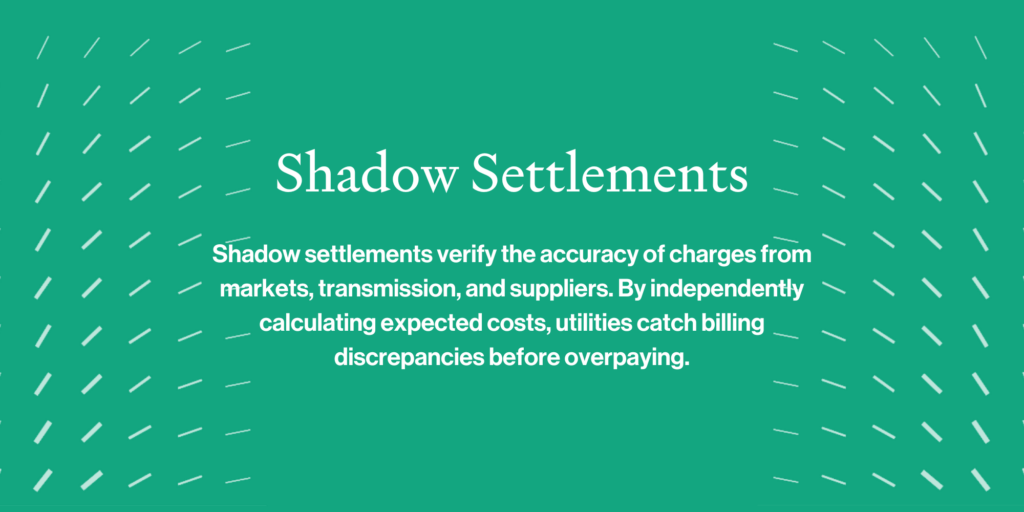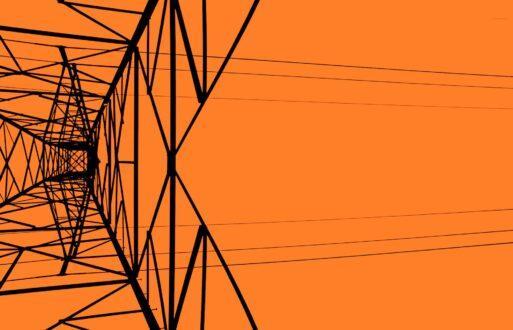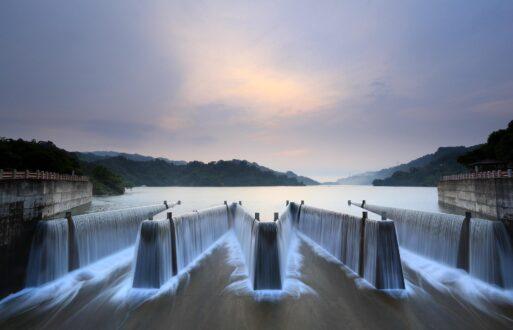As utilities adopt more renewable energy to meet their decarbonization goals, the settlement process has become increasingly complex thanks to the variability of wind and solar resources. Because of that complexity, it’s more important than ever that you do shadow settlements to verify the accuracy of your settlement data.
Ten years ago, shadow settlements were mainly concerned with verifying settlements coming from the market. Today, however, there are also transmission settlements, contract settlements, and energy imbalance market (EIM) settlements to consider.
In short, if you’re not doing shadow settlements in each of these areas, you’re very likely leaving money on the table.
What are shadow settlements?

Simply put, a shadow settlement verifies the accuracy of charges received. For example, if you know you used X megawatts from Y source at a rate of $Z, then when the bill comes you can confirm that X, Y, and Z are charged correctly. If they aren’t, you dispute the charge to avoid overpaying.
Mind the gaps in your shadow settlement processes
Many utilities have a shadow settlement process in place for their market settlements, but the same cannot be said about their transmission and contract settlements. But, as renewable penetration increases across the grid, it will be increasingly important to conduct shadow settlements in these two areas as well.
Read the PCI blog post, “Understanding Transmission Contract Settlements.”
Utility-scale solar and wind installations are typically located far from the load, and that means market participants will incur more transmission charges to move electricity from the source to where it’s needed. More transmission charges mean more opportunities for errors.
Likewise, as utilities work to meet their decarbonization goals, they’ll be contracting with third party renewable energy suppliers. Meter data for wind and solar can change quickly due to weather conditions; one minute a solar array could be generating 200 megawatt (MW) and the next it’s down to 30 MW. Do your supplier’s invoices reflect these fluctuations accurately?
Why you should be doing shadow settlements for everything
Now that we have a shadow settlement definition, let’s dig a bit more into why this process is so important. First, we’re talking about invoices totaling billions of dollars each year. If you’re not verifying the data, you’re trusting that the supplier is 100% accurate, 100% of the time. And that simply doesn’t happen. You should be doing ISO shadow settlements, EIM shadow settlements, and so on for each settlement received, because something as small as a 10-MW error could translate into a settlement bill that’s millions of dollars higher than it should be.
Shadow settlements are also a stellar forecasting tool that allows you to see your charges before the bill comes. Plus, if done properly, they let you compute day-ahead and real-time profit and loss for your resources.
Trust or verify?
Without an automated tool that collects and analyzes the thousands of data points involved, the shadow settlement process can be incredibly difficult. PCI Energy Solutions offers a software suite that enables you to easily conduct RTO and ISO shadow settlements, EIM shadow settlements, and energy shadow settlements for your third-party suppliers.
Contact us to learn more about how you can streamline your shadow settlement system.







